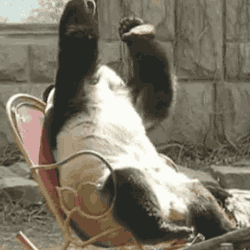 While in Bukhara, Shira talked me into visiting a Carpet Merchant friend of hers. I went into the demonstration sure I had no interest in purchasing anything. I was shown both wool and silk carpets made in the old way by women of a nearby village. Each large 10 by 12 carpet requires a master carpet maker working fulltime 8 months to complete. And despite my pre-demonstration pronouncement, they showed me a carpet perfect for the new pine floor in my Colorado Condo.
While in Bukhara, Shira talked me into visiting a Carpet Merchant friend of hers. I went into the demonstration sure I had no interest in purchasing anything. I was shown both wool and silk carpets made in the old way by women of a nearby village. Each large 10 by 12 carpet requires a master carpet maker working fulltime 8 months to complete. And despite my pre-demonstration pronouncement, they showed me a carpet perfect for the new pine floor in my Colorado Condo.
We haggled a little but eventually came to an agreed price including shipping to Colorado. I left the Trading Dome pretty satisfied with the color, quality, and price of my purchase. We had not walked more than an hour before Shira received a call from her friend asking if he could treat me to dinner at a restaurant that specialized in lamb kababs frequented by locals that tourists didn’t know about that he was sure I would love.
Grilled lamb – how could I say no! So that evening he swung by my hotel and picked us up and drove us to the outskirts of Bukhara to a nondescript restaurant in a strip center. We were expected and ushered upstairs to a dining room separate from the locals. The carpet man ordered for the three of us then asked if I would like a beer to drink with dinner. To which I should have replied – does a panda fragrantly sh-t in the woods? But since neither he or Shira had read my Chengdu blog I just said hell yes!
So, he spoke some rapid-fire words in Tajiki to a young assistant and gave him the keys to his Caddy and a wad of Soms (Uzbek currency) and off the young man went. When he returned, he brought back multiple beers and a bottle of Vodka. Not wanting to be rude I accepted the beers graciously and asked Shira what the Vodka was for. Her reply – for toasts! Then the best grilled lamb I have ever tasted was served in a big heaping pile. This lamb was so juicy – the incredibly succulent liquid squirted out with every bite filling my mouth and overpowering my taste buds.
Determined to do my best to eat my weight in lamb I was having a fine time and between the meal, the beer, and an interesting conversation about the carpet business and his trips to Santa Fa to an Arts Show I was having a wonderful time. I asked him who is the primary market was and he said tourists. I asked him why he didn’t swing through all the high-end ski towns in the West and approach the decorators and furniture stores about selling his carpets on consignment.
His answer boiled down to the fact that he doesn’t speak English and he wouldn’t know who to talk to. That was about the time we cracked open the Vodka and began toasting with shots. And by the time the bottle was empty I had bought a second 10 by 12 carpet for the Tallahassee House, an additional small carpet for Colorado, and offered to talk to the interior decorator and high end furniture store that I use in Colorado about his carpets and show them some samples to gage potential interest in quality hand-made carpets.
You might think by the next morning after the Vodka and lamb juice war off I would have suffered a bit of buyer’s remorse. But not in the least. I bought quality carpets at a third of what they would have cost in the States and had a wonderful evening with my new friend the carpet guy and Shira. (Photos of the carpets and dinner attached)
Day 2
And with that we were off to Khiva. And Khiva is another long four -hour drive across a poorly maintained road thru the Gobi Desert. We arrived at my Khiva hotel around noon unloaded the car and headed to the old walled city. (photos attached)
The old walled city (Complex of Ichan Kala) is the inner town protected behind 30+ foot brick walls. The oasis town of Khiva was a rest stop for caravans before crossing the desert. The old town has been designated a UNESCO World Heritage Site and provides plenty of examples of historical Muslim architecture and cultural practices.
The highlights of the Khiva Old Town Tour included the 19th century Friday Juma Mosque, Mausoleums of Pahlavon Mahmoud, Sayid Allavuddin and Shergozikhon, 19th Century Muhammad Aminkhan Maddrssha, 19th century Muhammand Rakimkhan Maddrassah, the 19th century Kalta Minor (Short Minaret), 19th century Tosh Hovli, 19th century Karavansaray of Ollukulikhan, the 19th century Ollukulikhan Maddrassah, 17th century Kunya Ark, old Citadel, Minorai Islom Khodja and Madrassha.
I think it is interesting that this living open-air museum is also home to over 300 families that still live within these walls as families have for centuries practicing and honing their skills in the arts and crafts of carpet making, woodcarving, pottery making, jewelry making, and smithing.
I watched carpet weavers and woodcarvers as they practiced their ancient arts in the Complex of Pahlavon Mahmu after visiting the mausoleum. The intricate wood carvings of things like Book Stands that could be turned in different configurations to hold more or fewer books and jewelry boxes with secret compartments and pressure locks were amazing feats of art and engineering.
And the patience, nimble fingers and incredible eyesight that is required of the women weaving carpets to tie knot after knot of neatly compacted knots into patterns of different colors and designs hour after hour, day after day, year after year and for decades is simply superhuman. These beautiful carpets are nothing less than works of art and are all hand-tied and the patterns are created by the women themselves.
One of the most interesting buildings in the old town is the Juma Mosque. Unlike most Mosque that sport huge beautifully tiled entrance arches and domes, this one-story mosque simply sits unassuming on a street with a normal door. Well not quite normal the ancient door is beautifully carved and hints at what you are about to see once you enter the portal.

Inside this huge square one story building are over 200 intricately carved wooden pillars holding up the roof. The pillars are all carved in different patterns and represent the styles of Khiva wood carvers from the 10th century thru the 19th century. Though most of the trees for most of these pillars were cut, wood seasoned, trimmed and carved for this mosque some were scavenged from other buildings then repurposed, and some were pillaged as trophies of war from other vanquished towns.
The builders of the mosque left three huge openings in the roof for the sun to shine thru which creates a beautiful affect as the sunlight plays across the shadows of the vastness of the dim hall.
While I was visiting, there was a delegation of high ranking government officials from Turkey being honored with a private prayer service on the other side of the mosque. Seemed fitting since the peoples of modern Turkey are originally from Central Asia and their ancestors possibly worshiped in this or the previous mosque that sat upon this spot.
While I was visiting, there was a delegation of high ranking government officials from Turkey being honored with a private prayer service on the other side of the mosque. Seemed fitting since the peoples of modern Turkey are originally from Central Asia and their ancestors possibly worshiped in this or the previous mosque that sat upon this spot.
 Khiva is the home to Uzbekistan’s tallest Minaret, and in my opinion the most beautiful. The Minorai Islom-Khodja rises 44 meters above the dusty street to dominate the Old City skyline. Whether viewed from street level or atop the city’s 30-foot walls by day or a rooftop café at dark the Minaret is the city’s centerpiece. The contrasting sandy colored bricks and alternating bands of blue and white geometric designs on tile combine with the tower’s height to create a beautiful effect by day but even more dramatic effect by night when lights are used to spotlight the incredible tile work.
Khiva is the home to Uzbekistan’s tallest Minaret, and in my opinion the most beautiful. The Minorai Islom-Khodja rises 44 meters above the dusty street to dominate the Old City skyline. Whether viewed from street level or atop the city’s 30-foot walls by day or a rooftop café at dark the Minaret is the city’s centerpiece. The contrasting sandy colored bricks and alternating bands of blue and white geometric designs on tile combine with the tower’s height to create a beautiful effect by day but even more dramatic effect by night when lights are used to spotlight the incredible tile work.
Khiva has a second interesting Minaret that is much shorter and looks like a bright blue barrel. Originally, in 1855 the minaret was being erected with plans to be 110 meters tall with a base diameter of 15 meters. Khiva’s ruler was killed and work stopped at a height of just 29 meters and has been named the Kalta-minor Minaret or “short minaret”. In addition to being stunted by the ruler’s death, the Kalta-minor is interesting because it is totally covered in beautiful glazed tiles of various shades of blue, white, green and tan tiles arranged to create different geometric design bands.
 One final complex I would like to point out is the 19th century Tosh Hovli Palace. I have included photos of the palace’s sleeping quarters for the ruler’s wives and concubines, the courtyard for receiving dignitaries complete with a platform for erecting a ceremonial yurt, and the ruler’s bedchamber.
One final complex I would like to point out is the 19th century Tosh Hovli Palace. I have included photos of the palace’s sleeping quarters for the ruler’s wives and concubines, the courtyard for receiving dignitaries complete with a platform for erecting a ceremonial yurt, and the ruler’s bedchamber.
The large U shaped building that housed the sleeping quarters for his wives and concubines was designed in such a way to keep the wives and sex slaves apart. The structure was designed with a secret hallway on the second floor behind the concubines’ quarters to allow the ruler privacy as he satisfied his carnal needs and to protect him from the wrath of jealous wives. Sneaky but Effective!!!
 And now I will share my latest Uzbeki-Tajiki border fiasco. When Hussain acquired my Tajiki Visa he was only allowed to get a one entry Visa. The problem was I needed to enter Tajikistan twice –once by air on the 8th then again on the 21st via the Sammerkand-Panjakent Road border crossing. Hussain said not to worry. Once I crossed into Uzbekistan on the 15th I could reapply for a new Visa and no problems getting the E-Visa by the 21st.
And now I will share my latest Uzbeki-Tajiki border fiasco. When Hussain acquired my Tajiki Visa he was only allowed to get a one entry Visa. The problem was I needed to enter Tajikistan twice –once by air on the 8th then again on the 21st via the Sammerkand-Panjakent Road border crossing. Hussain said not to worry. Once I crossed into Uzbekistan on the 15th I could reapply for a new Visa and no problems getting the E-Visa by the 21st.
Once again, Hussain’s optimism was not well-founded. I received my visa approval on July 25 three days after arriving in Istanbul. So once again I found myself stranded on one side of the border with my prepaid hotel, my large bag containing most of my possessions, and my exit plane ticket to Istanbul from Dushanbe all on the other side of the border.
 The only solution was to return from Khiva thru Bukhara to Sammarkand. Have Bobo retrieve my big bag from the hotel in Dushanbe, drive 5 hours to deliver it to the border where I would be waiting on the Uzbeki side to meet him. Once I retrieved my bag I would then catch a train to Tashkent and fly out for Istanbul on a 2 am flight after paying for a second plane ticket.
The only solution was to return from Khiva thru Bukhara to Sammarkand. Have Bobo retrieve my big bag from the hotel in Dushanbe, drive 5 hours to deliver it to the border where I would be waiting on the Uzbeki side to meet him. Once I retrieved my bag I would then catch a train to Tashkent and fly out for Istanbul on a 2 am flight after paying for a second plane ticket.
So, to sum up, Plan B was going to cost me a second hotel room for the night of the 20th, a train ticket from Sammarkand to Tashkent, and a $600 plane ticket from Tashkent to Istanbul, and a long night with no sleep. Turns out I needed a plan C. When they went to collect my bag from the hotel the thief owner demanded $200 ransom to release the bag to someone other than me! So, they left without the bag.
 I received word of this new complication just as I reached Bukhara and was sitting down to lunch with Carpet man’s family. He had again invited me to dine with him but this time at his hotel and he cooked the lamb himself. Unfortunately, I was the world’s worst guest because I spent the entire lunch booking a Samarkand hotel room, my flight from Tashkent to Istanbul, and yelling at Hussain and the Hotel over the phone about my bag.
I received word of this new complication just as I reached Bukhara and was sitting down to lunch with Carpet man’s family. He had again invited me to dine with him but this time at his hotel and he cooked the lamb himself. Unfortunately, I was the world’s worst guest because I spent the entire lunch booking a Samarkand hotel room, my flight from Tashkent to Istanbul, and yelling at Hussain and the Hotel over the phone about my bag.
But the Hotel owner was not budging – he insisted that I pay a second time for the three-night’s hotel bill even though I prepaid in early March and both he and I had copies of the receipt. He knew he had the bag, I had very little time to retrieve it, and I could not personally come to Dushanbe and kick his ass and burn down the God Damn Hotel! He had me over a barrel.
So, plan C was for Hussain to front the $200 from the tour fee I had given him in US dollars on arrival and I would reimburse him when I collected the bag in Samarkand. Everything seemed to be worked out by the end of lunch and Shira suggested I take the train back to Samarkand and save my body the pounding crossing the desert by car. And it was a great idea. The train took about a third of the time, was a much smoother ride with better air conditioning.
Her driver met me at the train station in Samarkand and took me to dinner and then my hotel. He also offered to go to the border and retrieve my bag by himself so I could sleep in since I would be up all the next night. I went to bed thinking everything was handled and that I would have my bag back by 9 am catch the afternoon train to Tashkent and be on my way to Istanbul by 3 am the next morning.
 Well, it wasn’t that easy. I received a call from Hussain at three in the morning telling me the jack ass owner of the Dior Hotel still wouldn’t release my bag to the driver and to not come to the border because no one would be there. Hussain fought with the hotel owner throughout the morning and day and finally drove to Dushanbe himself and personally went in and retrieved my bag.
Well, it wasn’t that easy. I received a call from Hussain at three in the morning telling me the jack ass owner of the Dior Hotel still wouldn’t release my bag to the driver and to not come to the border because no one would be there. Hussain fought with the hotel owner throughout the morning and day and finally drove to Dushanbe himself and personally went in and retrieved my bag.
Plan D was that he would leave Dushanbe at 5 pm and arrive by car at the Tashkent Airport by 11 pm or midnight to reunite me with my stuff. And while all this drama was going on – Shira and her driver were still finding ways to distract me from my problems with more sites. The coolest was a trip to the one remaining mulberry paper making business in Samarkand.
Water driven Oil making press
At one time, there were hundreds of small mulberry paper-making establishments but with modern paper so cheap most had gone out of business. My Latvian friend, Nelda, had told me if I ever got the chance I should take a tour of a mulberry parchment making process and I’m glad Shira arraigned it and I went. The process was fascinating.
They take one inch to half-inch diameter and two-foot-long green mulberry sticks and strip them by hand with a sharp knife into long thin strips. The thin strips are then soaked in water until they become soft and pliable. Then the wet pulpy softwood fibers are placed in a stone caldron in the floor and the mass is pounded for days with a large wooden dowel into mush. This mush becomes like a paste that is then applied to a screen. The paste covered screen is next covered and smashed tight with a heavy press and a giant rock is placed on it to smash the fibers together as they dry.
Stripping mulberry sticks
Soaking the mulberry strips
Turning to mush
Attaching the mulberry pulp to the screen
Once the parchment dries the press is removed, the wet mass of compressed mulberry pulp is peeled from the screen and hung on a rack for final drying. Once dry the parchment is laid flat on a table and polished with a flat rock. And after all that you have a beautiful piece of mulberry parchment ready for either printing upon or used as a canvas for painting. Parchment made from Mulberry in this way will last 1000 years. Today’s mass-produced paper from pulp wood last 100 years at the most.
While we were there they took me over to another building that used a small water mill to run a water press that they fed various plants to create oils. Photos of the paper making process as well as the water-fed oil press are included.
Pressing the pulp into a sheet
Hanging and drying the parchment
Polishing
The one final drama took place at the Tashkent Airport. I received a call from Hussain around 8 pm informing me he was in route and would be there shortly after 11 pm. He informed me that we would not be able to communicate by phone from that point forward because his cell phone did not work in Uzbekistan. We agreed that I would wait for him outside the security gate at the parking lot since only ticketed passengers could proceed past that point.
 So, there I stood at the edge of the parking lot from 11 pm until just before 1 is and no sign of Hussain. I was just about to give up and go check-in for my flight when Hussain made his dramatic entrance running across the parking lot dragging my bag and waving his arm frantically. I gave him $200 he gave me my bag and I sprinted to check-in before the flight was closed out. I made it thru check-in, passport control, and security then walked straight on the plane as one of the last to board with only minutes to spare.
So, there I stood at the edge of the parking lot from 11 pm until just before 1 is and no sign of Hussain. I was just about to give up and go check-in for my flight when Hussain made his dramatic entrance running across the parking lot dragging my bag and waving his arm frantically. I gave him $200 he gave me my bag and I sprinted to check-in before the flight was closed out. I made it thru check-in, passport control, and security then walked straight on the plane as one of the last to board with only minutes to spare.
A perfect example of: Men make plans and the Gods Laugh! And with that in mind, I flew to Istanbul and my next Plan B. But that is a story for my next blog.





























































